History of the D18
Style 18
Decades before the world was introduced to the dreadnought, Martin introduced their number system to indicate materials and degree of decoration. The ‘18-style’ is named after the price tag of those instruments: $18.
In addition, the 18-style did not originally have mahogany, but rosewood back and sides. This changed in 1917. Style 18 switched to mahogany, and the 28-style got rosewood.
Origin of the dreadnought
Like many developments in guitar history, the dreadnought is also the result of the quest for more volume. These instruments were designed to produce more projection and bass.
The very first dreadnought-sized guitars were not Martin guitars, but they were produced by Martin. How that could be? Martin produced these guitars for the Oliver Ditson Company from 1916 onwards. For example, the ‘111 model’ pictured here. The 111 model has mahogany back and sides, a 12-fret neck and a slotted headstock.

The D18 of Martin
In 1931, Martin started producing the dreadnought under their own name. Like the Ditson models, this dreadnought had a 12-fret neck. In 1934, Martin introduced the 14-fret version of the D18, which became the modern standard. Besides the new neck, the body got its distinctive 'square' shoulders and also the headstock is as we know it today.
With its mahogany construction, the D18 was positioned as a more affordable alternative to the top-of-the-range D28, which made it especially popular during the Great Depression. The guitar's dry, punchy tone and light weight attracted musicians looking for clarity and projection without too much embellishment. Over the years, the D18 became a favourite among singer-songwriters and flatpickers because of its balanced sound and midrange. Indeed, this fits well between bass instruments and the higher notes of instruments such as mandolins.
One of the rarest versions is the 1937 D18 with a ‘shaded top’; a top with a sunburst finish. Only a few were made, making it a sought-after collector's item today.
Beginning of ‘number-style’ system
Style 18 originally has rosewood back and sides.
From rosewood to mahogany
Style 18 gets mahogany back and sides.
Martin takes over production of the dreadnought.
Introduction of the 14-fret dreadnought.
The Shaded Top
Martin makes a limited quantity of D18s with a ‘shaded top’ sunburst finish.
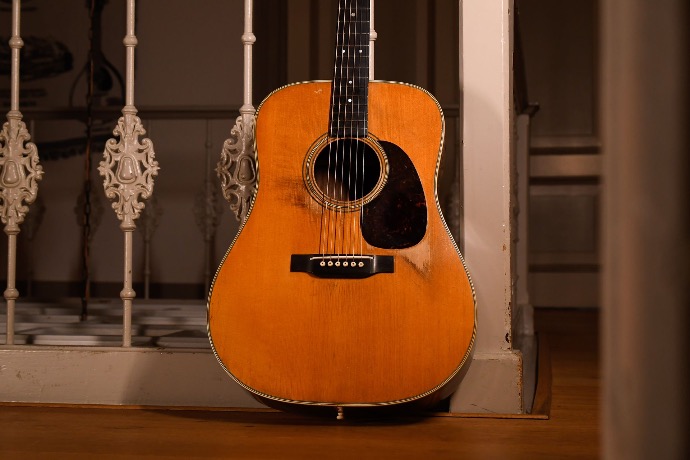
Specs Evolution
Bracing
Before 1939, the D18 had forward-shifted X-bracing, which allowed for greater movement of the top and resulted in a warm, open tone with a strong bass response. In 1939, Martin moved the bracing back slightly, giving the D18 a more tight sound and more focus in the midrange.
Another major change occurred in 1944 when Martin replaced scalloped bracing with non-scalloped bracing to increase production efficiency. While scalloped bracing provided a more resonant and dynamic sound, non-scalloped bracing gave the guitar a tighter, more articulate tone that could cut through a mix more effectively.
Forward-Shifted Bracing
More bass response, open resonance, warm low end.
Rear-Shifted Bracing
Tighter sound, more midrange focus, less boominess.
Scalloped Bracing
More resonance, scooped mids, rich bass & treble.
Non-Scalloped Bracing
More midrange-focused, tighter, and articulate, making it better for cutting through a mix in band settings.
Tapered Bracing
The transition to non-scalloped bracing was gradual from 1944 to 1949.
Neck
Before 1944, the D18 used a steel T-bar to reinforce the neck, which provided excellent sustain and structural rigidity. However, due to wartime metal shortages, Martin briefly replaced the steel bar with a lighter ebony bar in 1944, which gave the guitar a woodier, warmer tone, but at the expense of neck stability. In 1946, Martin switched back to a steel T-bar.
The neck profile also changed over the years, from a solid V-shape in the 1930s to a softer V or rounded profile in the 1940s and 1950s. By the 1960s, Martin opted for a slimmer C-shaped neck for better playability, to meet the preferences of modern players.
Mystery Tops
One of the more intriguing quirks in the history of the D18 are the so-called “Mystery Tops” from the 1950s. While Sitka spruce was the standard top wood, some D18s from that era have tops with grain patterns that do not match the typical Sitka characteristics. These variations suggest that Martin used a mix of Sitka, Adirondack or even Engelmann spruce. This was possibly due to material shortages or leftovers from previous decades. Because these guitars have unique visual and tonal characteristics, they are highly sought after by collectors.
V-shaped Neck
The V-shaped neck is thicker and fuller than its successors.
Soft V-shaped Neck
The Soft V, or rounder, profile is slightly slimmer.
Steel T-Bar
Good sustain, clear tone, and stable but no truss rodd.
Tuning Machines
Celluloid tuners due to metal shortages.
Ebony Rod
Lighter, warmer, woodier tone, but less structural support.
Steel T-bar
More rigid, common in post-war models.
C-shaped Neck
Slimmer necks with more C-shape. Designed for easier playability.
Ultimate Vintage Martin D18 Shootout
Watch our vintage Martin D18 comparison video here.
Featuring demos by one of the best acoustic guitarists in the Netherlands: Bertolf!
Flatpicking Comparison
Fingerstyle Comparison
Guitars From The Video
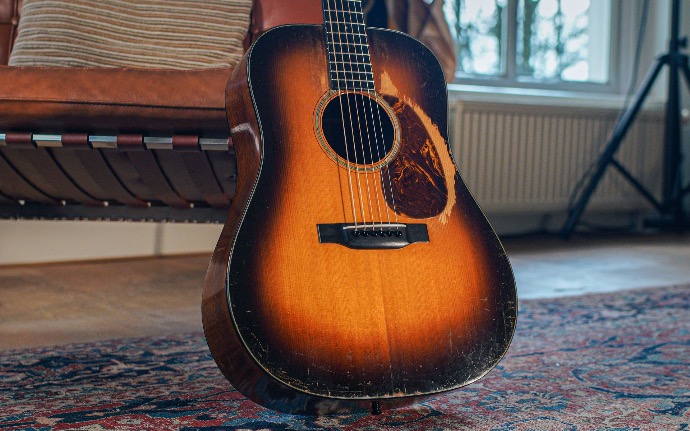
1937: Shaded Top
Top: Adirondack
Neck Reinforcement: Steel T-Bar
Bracing: Forward Shifted, Scalloped

1940
Top: Adirondack
Neck Reinforcement: Steel T-Bar
Bracing: Rear Shifted, Scalloped
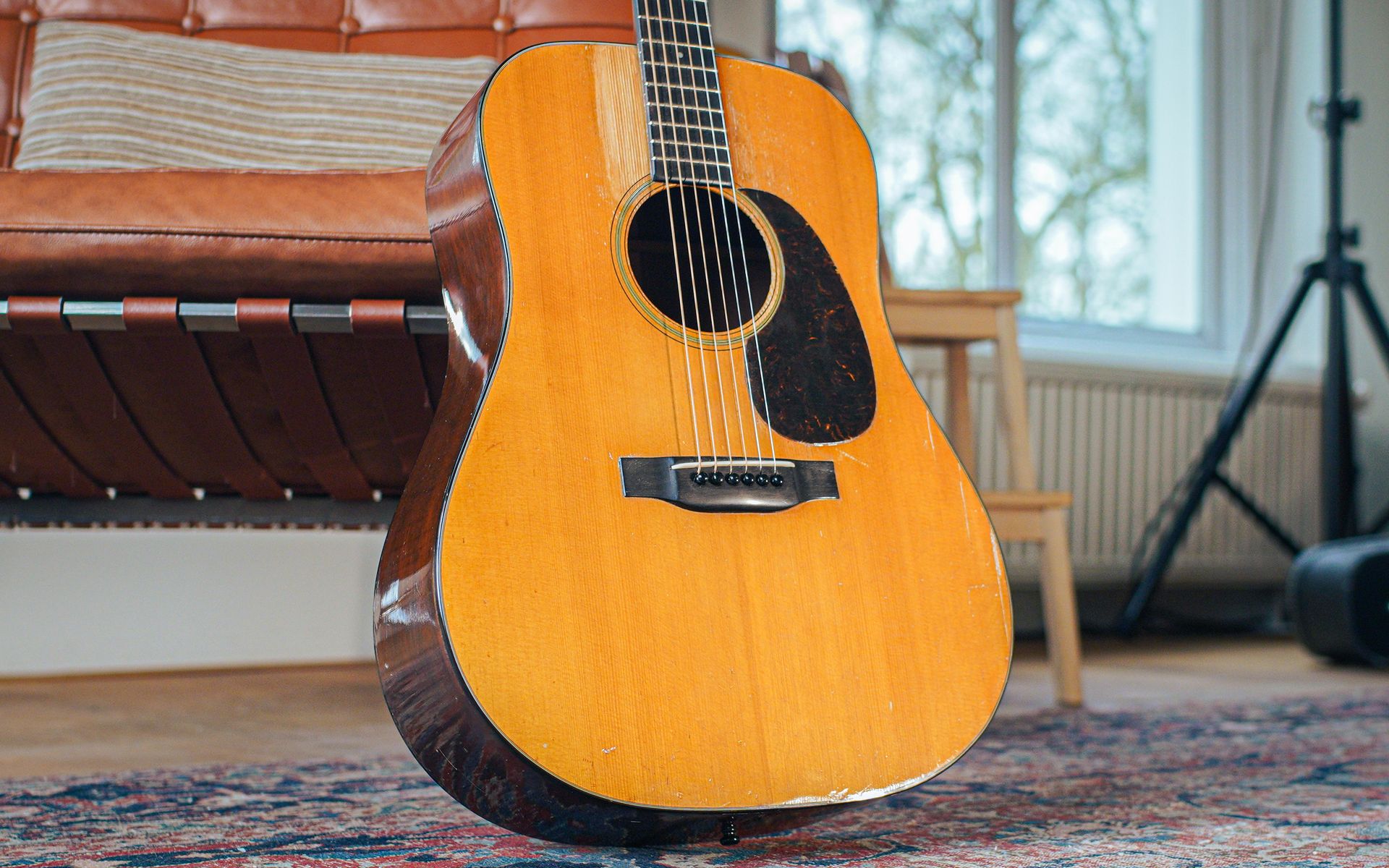
1944
Top: Adirondack
Neck Reinforcement: Ebbenhout
Bracing: Rear Shifted, Scalloped
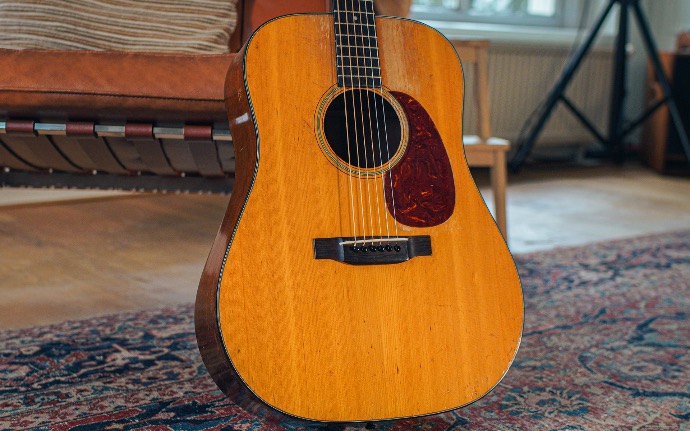
1949
Bovenblad: Sitka Spar
Neck Reinforcement: Steel T-Bar
Bracing: Rear Shifted, Tapered
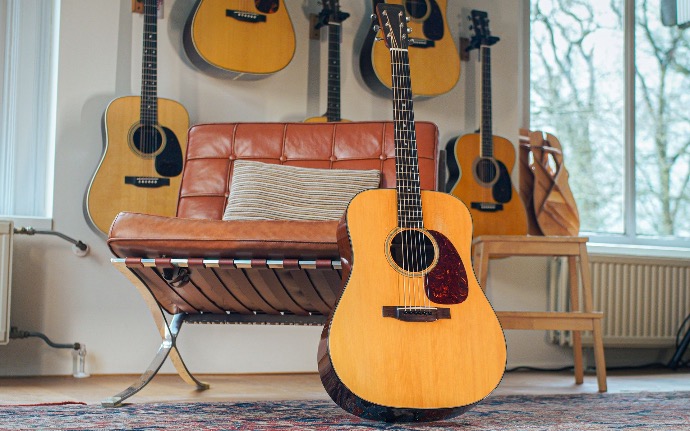
1953: Mystery Top
Top: Adirondack
Neck Reinforcement: Steel T-Bar
Bracing: Rear Shifted, Non-Scalloped
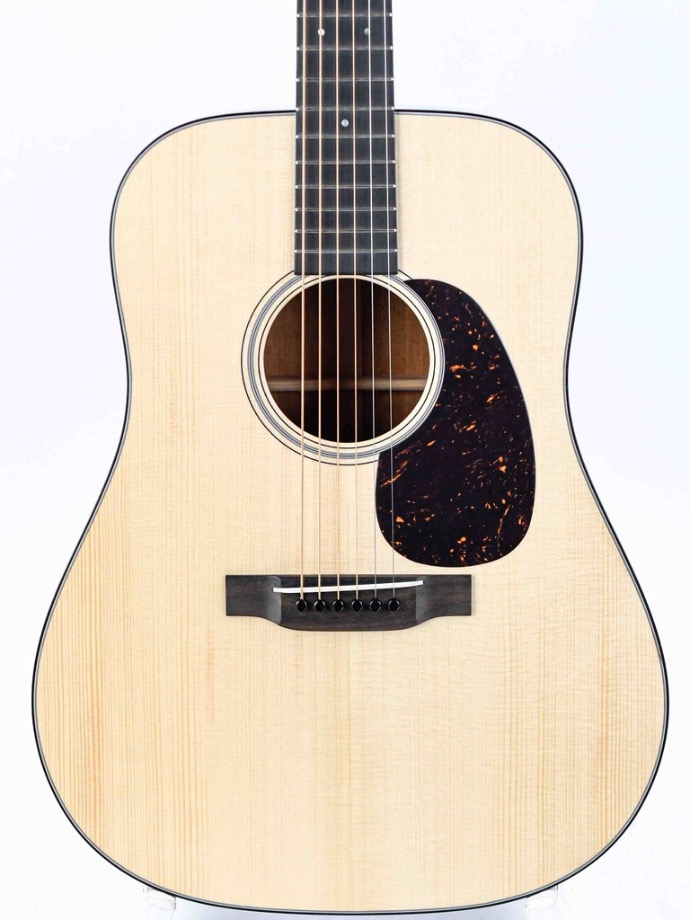
Want to see more vintage guitars?
Then be sure to check out our wide selection!